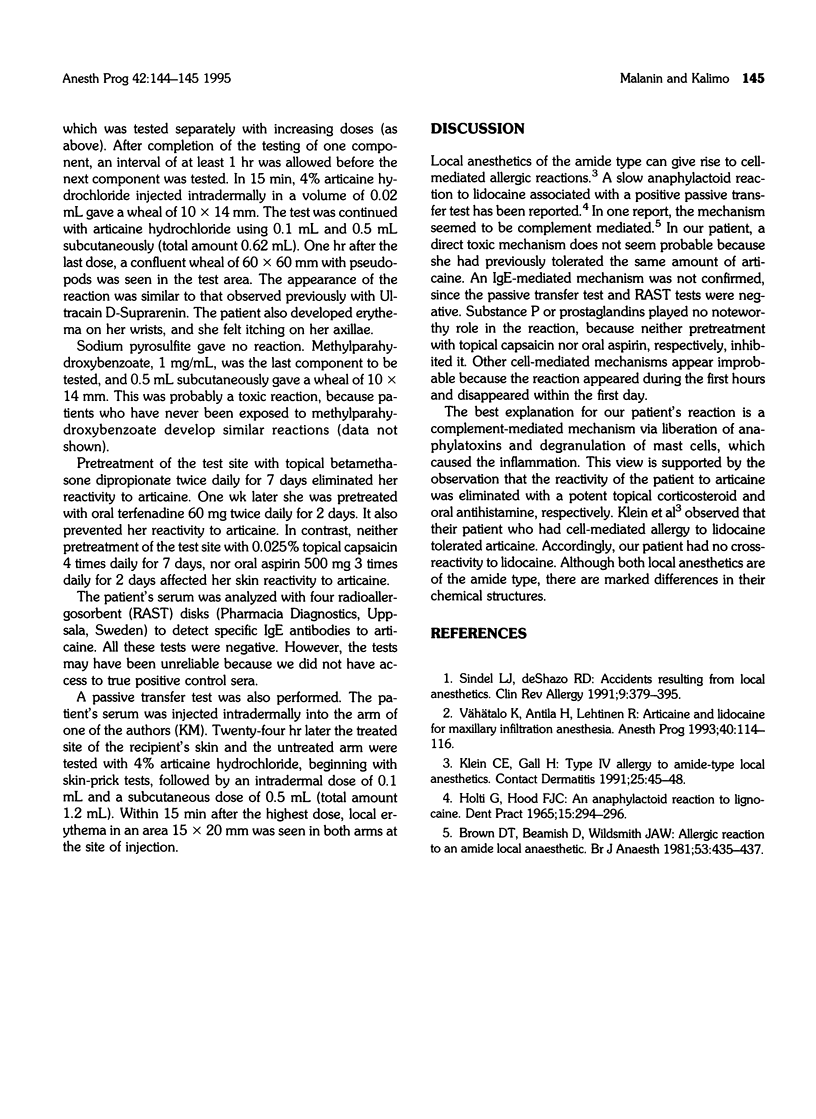Abstract
A patient developed skin erythema and wheals within 1 h after local dental anesthesia with articaine hydrochloride. Pretreatment with oral terfenadine or topical betamethasone dipropionate prevented her reaction to articaine. In contrast, neither pretreatment with oral aspirin nor topical capsaicin affected her reaction to articaine. The results of radioallergosorbent tests (RAST) to articaine and a passive transfer test were negative. The reaction was probably caused by a complement-mediated mechanism leading to the degranulation of mast cells. The patient tolerated local anesthesia with lidocaine.
Full text
PDF

Selected References
These references are in PubMed. This may not be the complete list of references from this article.
- Brown D. T., Beamish D., Wildsmith J. A. Allergic reaction to an amide local anaesthetic. Br J Anaesth. 1981 Apr;53(4):435–437. doi: 10.1093/bja/53.4.435. [DOI] [PubMed] [Google Scholar]
- HOLTI G., HOOD F. J. AN ANAPHYLACTOID REACTION TO LIGNOCAINE. Dent Pract Dent Rec. 1965 Apr;15:294–296. [PubMed] [Google Scholar]
- Klein C. E., Gall H. Type IV allergy to amide-type local anesthetics. Contact Dermatitis. 1991 Jul;25(1):45–48. doi: 10.1111/j.1600-0536.1991.tb01772.x. [DOI] [PubMed] [Google Scholar]
- Sindel L. J., deShazo R. D. Accidents resulting from local anesthetics. True or false allergy? Clin Rev Allergy. 1991 Fall-Winter;9(3-4):379–395. doi: 10.1007/BF02802315. [DOI] [PubMed] [Google Scholar]
- Vähätalo K., Antila H., Lehtinen R. Articaine and lidocaine for maxillary infiltration anesthesia. Anesth Prog. 1993;40(4):114–116. [PMC free article] [PubMed] [Google Scholar]


